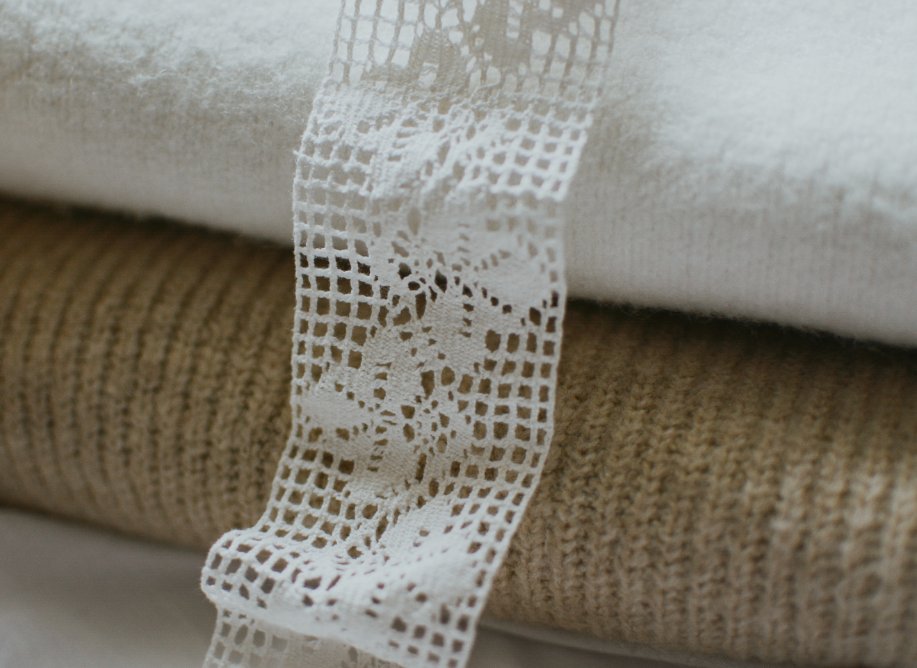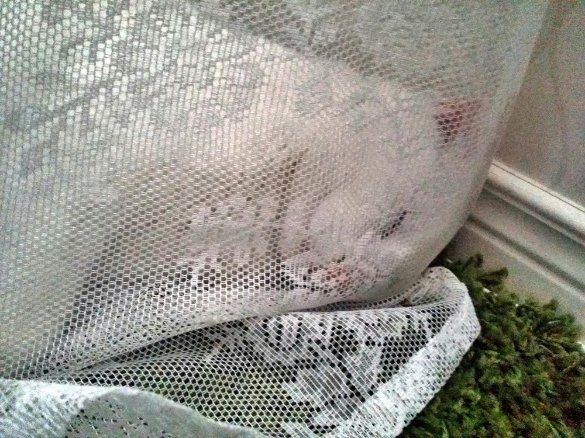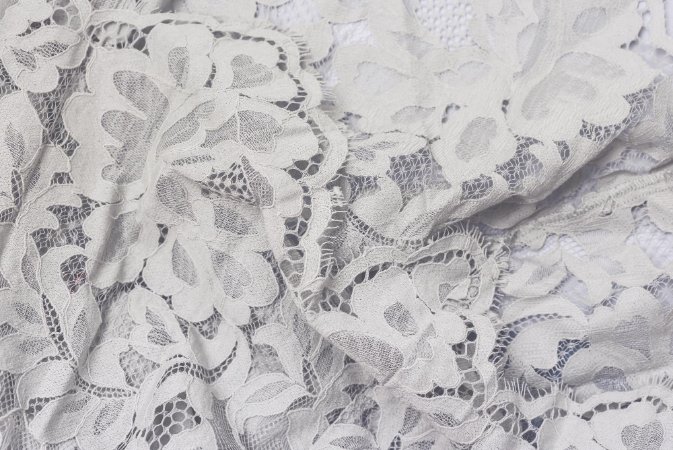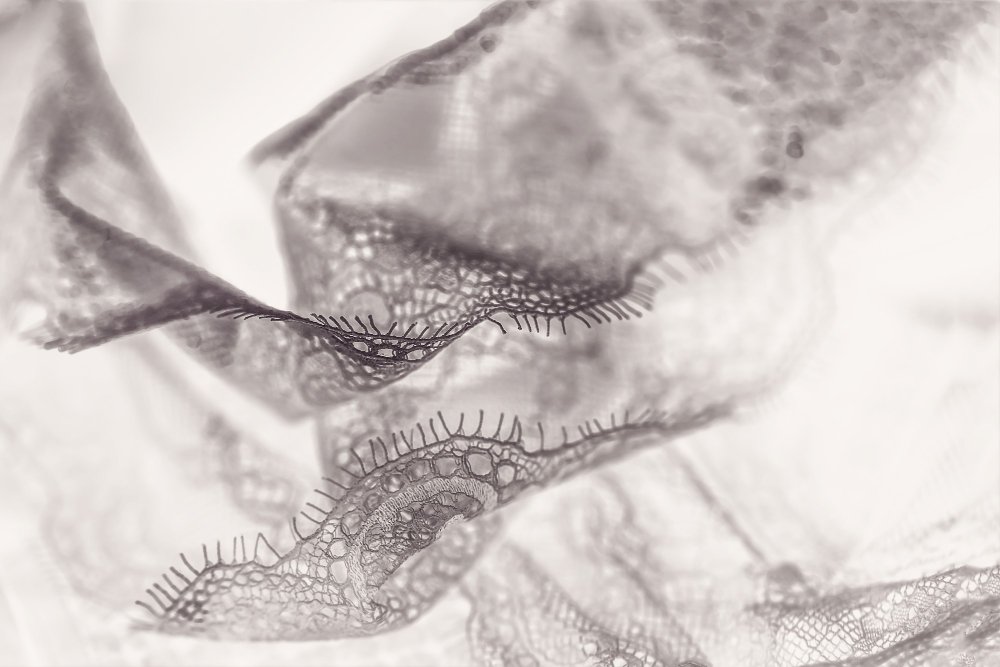Master the ancient art of textile repair that transforms damaged fabrics into beautiful, functional pieces
Table of Contents
- Introduction
- Understanding Darned Lace Fabric
- What Does Darned Clothes Mean?
- Difference Between Darn and Patch
- Techniques and Tools for Mastering the Craft
- Step-by-Step Tutorial for Beginners
- Designing and Weaving Intricate Patterns
- Modern Applications and Sustainability
- Troubleshooting Common Problems
- Project Gallery and Inspiration
- Frequently Asked Questions
- Conclusion
Key Takeaways
- Combines fabric repair methods with decorative stitching traditions
- Features two main styles: antique and filet variations
- Works on both square and rectangular mesh foundations
- Accessible for beginners yet rich enough for experts
- Adapts well to modern home décor and fashion projects
- Preserves historical techniques while encouraging innovation
Did you know artisans have used the same stitching method for over 500 years to create breathtaking textiles? This ancient practice combines practical repair skills with artistic flair, producing delicate patterns that withstand generations of use.
At its core, this technique transforms basic mesh materials into detailed artworks. By weaving threads in precise rows, you can build floral motifs or geometric shapes that appear to float on air. What began as a way to mend clothing evolved into a celebrated form of decorative expression.
Modern creators still embrace these traditional methods, blending historical patterns with fresh ideas. From table linens to wedding dresses, the results showcase both durability and elegance. The process requires patience but rewards you with pieces that feel alive with texture and history.
Understanding Darned Lace Fabric

The humble darning stitch has roots deeper than most realize, spanning continents and cultures. This enduring craft began as life-saving textile preservation before becoming an artistic tradition. Early societies relied on durable repairs for clothing and household items, planting seeds for creative expression.
Origins and Historical Context
Archaeological evidence shows darning techniques appeared independently across ancient civilizations. Peruvian textiles from 500 BCE reveal intricate repair work, while Japanese kogin embroidery demonstrates geometric precision. These methods shared a common goal: extending fabric life through strategic thread manipulation.
By the Middle Ages, European households transformed basic stitches into decorative elements. A 14th-century linen fragment from Egypt displays floral patterns woven directly into mended areas. “Repairs became badges of honor,” showing care and skill in equal measure.
The Evolution of the Darning Stitch
What started as straight-line mending grew into complex weaving patterns. Artisans discovered that alternating thread colors and stitch lengths created visual depth. Northern European “språng” techniques produced elastic netting, while Mexican traditions incorporated vibrant dyed yarns.
Three key developments shaped modern practice:
- Interlocking rows for structural stability
- Diagonal stitching for dynamic textures
- Multi-layer weaving for 3D effects
This evolution proves simple tools, needle and thread, can achieve astonishing complexity when guided by human ingenuity. Today’s crafters still use these time-tested methods to blend function with beauty.
What Does Darned Clothes Mean?
When we talk about “darned clothes,” we’re referring to garments that have been repaired using the darning technique. This isn’t just any repair method – darning is a specific sewing technique for repairing holes or worn areas in fabric using needle and thread alone.
Understanding the Term “Darned”
The word “darned” comes from the French “darne,” meaning to mend or repair. In textile work, it specifically refers to the process of recreating the woven structure of fabric by hand, thread by thread.
Darned clothes carry a rich history of resourcefulness and sustainability. Before the era of fast fashion, families treasured their textiles and took pride in maintaining them. A well-darned sock or carefully mended sleeve showed skill and thrift.
Today, darned clothes are making a comeback as part of the visible mending movement. Rather than hiding repairs, modern crafters celebrate them as artistic elements that add character and tell the story of a garment’s journey through life.
What is the Difference Between Darn and Patch?
While both darning and patching repair damaged fabric, they use completely different approaches and achieve distinct results.
| Aspect | Darning | Patching |
|---|---|---|
| Method | Recreates fabric structure thread by thread | Covers hole with separate piece of fabric |
| Materials | Only thread or yarn | Fabric patch plus thread |
| Appearance | Mimics original weave pattern | Creates distinct overlay |
| Best For | Small holes, worn areas, knits | Large tears, decorative repairs |
| Skill Level | Moderate to advanced | Beginner to moderate |
| Time Required | Longer, detailed work | Quicker application |
When to Choose Each Method
Choose darning when: You want an invisible repair, the hole is small to medium-sized, or you’re working with knitted items like socks and sweaters.
Choose patching when: You’re dealing with large tears, want to add decorative elements, or need a quick fix for sturdy fabrics like cotton or denim.
Understanding these differences helps you select the right repair method for your specific needs. Both techniques have their place in the modern maker’s toolkit, and knowing when to use each ensures the best results for your textile restoration projects.
Techniques and Tools for Mastering the Craft
Precision tools and time-tested methods define modern textile restoration. Whether you’re mending heirlooms or creating decorative pieces, you can choose between hand techniques and mechanical solutions based on your project needs.
Manual Darning vs. Machine Darning
Hand stitching with a needle provides unmatched control for intricate darning stitch patterns. This method lets you adjust thread tension mid-stitch, crucial for matching delicate textures. Machines excel at speed, producing uniform grids ideal for table linens or curtain panels.
Essential Tools: Darning Egg, Mushroom, and Gourd
Three specialized shapes stabilize materials during repairs. The curved surface of a darning egg prevents puckering in socks. Mushroom tools handle flat areas like elbows, while gourds contour to complex shapes. Each tool maintains fabric structure, allowing tight, even stitches.
Tool Selection Guide
- Darning Egg: Perfect for socks, sleeves, and curved areas
- Darning Mushroom: Ideal for flat repairs on shirts, pants, and linens
- Darning Gourd: Excellent for complex shapes and three-dimensional items
- Alternative Tools: Tennis balls, light bulbs, or smooth stones work in a pinch
Fine Darning, Invisible Darning, and Pattern Darning Explained
Belgian techniques hide repairs using threads plucked from garment seams. For visible designs, pattern darning alternates colored threads in geometric sequences. Intermediate crafters often combine methods, reinforcing weak areas first, then adding decorative elements.
Modern workshops might feature both vintage wooden tools and computerized machines. The best results come from understanding when to honor tradition and when to embrace innovation.
Essential Darning Supply Checklist
Step-by-Step Tutorial for Beginners
Ready to try your first darning project? This beginner-friendly tutorial will guide you through creating a basic repair that builds your skills while producing beautiful results.
Video Tutorial: Vintage Lace Net Darning
Watch this fascinating demonstration of lace net darning using a vintage 1980s craft kit
How to Create Your First Darning Repair
- Prepare Your Workspace: Find a comfortable spot with good lighting. Gather your darning needle, matching thread, scissors, and darning egg or mushroom.
- Assess the Damage: Examine the hole or worn area. Trim any loose threads carefully, but don’t make the hole larger than necessary.
- Position Your Support: Place the darning egg or mushroom behind the hole, stretching the fabric gently but not tightly over the tool.
- Thread Your Needle: Use a thread length about 18 inches long. Thread your blunt darning needle without knotting the end.
- Create the Foundation (Warp): Starting about 1/4 inch from one edge of the hole, weave your needle in and out of the fabric, crossing the hole horizontally. Don’t pull tight – leave the threads slightly loose.
- Build the Framework: Continue laying parallel threads across the hole, spacing them about 1-2 fabric threads apart. These form your “warp” threads.
- Start the Weave (Weft): Now work perpendicular to your foundation threads. Weave your needle over and under alternate warp threads, just like basic weaving.
- Complete the Pattern: On your return pass, alternate the over-under pattern. This creates the classic woven appearance that matches most fabrics.
- Fill the Space: Continue weaving back and forth until you’ve filled the entire hole. Keep tension even but not tight.
- Secure Your Work: Weave the thread end into the surrounding fabric and trim excess. Remove the darning tool carefully.
Beginner Tips for Success
- Start with practice holes in scrap fabric before working on valuable items
- Choose high-contrast thread for learning, then match colors for real repairs
- Take breaks to avoid eye strain and maintain steady hands
- Don’t worry about perfection – even uneven darning is functional and charming
Designing and Weaving Intricate Patterns
Pattern creation in textile arts bridges mathematical precision with creative expression. Two distinct approaches dominate this craft: antique and filet styles. Each method uses specific grid foundations to achieve its signature look while offering unique opportunities for artistic exploration.
Antique Lace and Filet Lace Designs
Antique designs flow across rectangular grids like brushstrokes on canvas. This structure supports curved motifs and organic shapes favored in historical tablecloths and shawls. You build patterns row by row, alternating dense thread clusters with open spaces for contrast.
Filet techniques thrive on square meshes, producing crisp geometric forms perfect for symmetrical projects. The method gained popularity in the 1800s for replicating lace effects through precise stitching. “Filet work turns thread into architecture. Every intersection becomes a decision point.”
Popular Pattern Types
- Floral Motifs: Roses, daisies, and vine patterns work beautifully in antique style
- Geometric Designs: Diamonds, squares, and chevrons suit filet techniques
- Pictorial Elements: Birds, butterflies, and simple landscapes add narrative interest
- Border Patterns: Repeating elements that frame larger designs
Modern Twists on Traditional Techniques
Today’s creators reimagine classic grids with bold colors and unexpected materials. Neon threads might outline abstract shapes on black mesh, while metallic yarns add shimmer to geometric wall hangings. Some artists combine digital pattern-making tools with hand-weaving for hybrid designs.
Key innovations include:
- Modular panels that interlock for large installations
- Mixed-media additions like beads or wire
- Simplified motifs for faster contemporary projects
These adaptations preserve core techniques while inviting fresh interpretations. Whether you’re crafting heirloom-quality pieces or experimental art, the dance between threads and ground continues to inspire.
Classic antique-style floral design perfect for table runners
Contemporary filet pattern using high-contrast threads
Experimental piece combining darning with metallic accents
Modern Applications and Sustainability
In our current era of environmental consciousness, darning techniques have found new relevance beyond traditional repairs. The slow fashion movement embraces visible mending as both practical skill and artistic statement.
Darning as Eco-Friendly Fashion
Modern darning champions extend garment life while reducing textile waste. A single darned sweater can serve for decades instead of heading to landfills. This approach aligns perfectly with sustainable living principles and challenges throwaway culture.
Contemporary applications include:
- Visible Mending: Celebrating repairs as decorative elements
- Designer Darning: Luxury brands incorporating deliberate “worn” areas
- Upcycling Projects: Transforming damaged clothing into art pieces
- Educational Programs: Teaching repair skills in schools and communities
Contemporary Color Trends and Techniques
2025 brings exciting color palettes to traditional darning. Jewel tones create striking contrasts against natural fabrics, while pastels offer subtle enhancement. Gradient effects achieved through careful thread selection add modern sophistication to ancient techniques.
2025 Darning Color Trends
- Forest Greens: Rich, earthy tones for natural fiber repairs
- Sunset Oranges: Warm, energetic colors for statement pieces
- Ocean Blues: Calming shades perfect for meditation-style mending
- Metallic Accents: Gold and silver threads for special occasion repairs
The integration of darning into modern fashion reflects broader cultural shifts toward mindful consumption and appreciation for handmade quality. As more people discover the meditative aspects of careful stitching, darning transforms from necessity to therapeutic practice.
Troubleshooting Common Problems
Even experienced crafters encounter challenges when darning. Understanding common issues and their solutions helps you achieve better results and avoid frustration.
Problem: Puckering or Gathering
Cause: Thread tension too tight or fabric stretched incorrectly over darning tool.
Solution: Relax your grip, use looser stitches, and ensure fabric lies naturally over the support. Practice tension control on scrap material first.
Problem: Uneven Thread Spacing
Cause: Inconsistent spacing between foundation threads or rushing the process.
Solution: Use the fabric’s existing weave as a guide. Count threads carefully and work slowly until muscle memory develops.
Problem: Thread Keeps Breaking
Cause: Thread too old, needle too small, or excessive friction during weaving.
Solution: Use fresh thread, select appropriate needle size, and wax thread lightly if working with rough fabric.
Problem: Color Doesn’t Match
Cause: Lighting differences or fabric fading over time.
Solution: Test color matches in natural daylight. For aged fabrics, slightly lighter thread often works better than exact matches.
Tool Care and Maintenance
Proper tool maintenance ensures consistent results and extends equipment life. Clean darning eggs and mushrooms with mild soap and dry thoroughly. Store needles in protective cases to maintain points and prevent rust.
Quick Reference: Thread Selection Guide
| Fabric Type | Recommended Thread |
| Cotton | Cotton embroidery floss or mercerized cotton |
| Wool | Wool yarn or embroidery wool |
| Linen | Linen thread or cotton in matching weight |
| Silk | Silk thread or high-quality rayon |
Project Gallery and Inspiration
Discover the versatility of darning techniques through these inspiring project ideas. Each example demonstrates different skill levels and creative approaches to this timeless craft.
Share Your Darning Creations
We love seeing your darning projects! Share photos of your work to inspire others and celebrate the beauty of repaired textiles. From first attempts to masterpiece creations, every repair tells a story worth sharing.
Grandmother’s linen tablecloth brought back to life with invisible darning techniques
Colorful geometric darning transforms worn socks into wearable art
Decorative darning adds intentional texture to plain knitwear
Large tear in vintage curtain seamlessly mended using pattern darning
Contemporary artist uses darning techniques in mixed-media wall hanging
Playful darning repair makes holes in kids’ clothes fun again
Beginner Success Stories
New to darning? You’re in excellent company. Many crafters discover unexpected joy in this meditative practice. Sarah from Portland shares: “My first darning project was a disaster, but my tenth was beautiful. The key is patience and practice.”
Another success story comes from Miguel in Austin: “I started darning to save money on sock replacement. Now I look forward to finding holes so I can practice new patterns!”
Coming Soon: Time-Lapse Videos
Watch complete darning projects from start to finish in our upcoming video series
Frequently Asked Questions
A darning egg or mushroom stabilizes the material while working. Sharp needles, fine threads matching the original weave, and embroidery hoops help maintain even tension. These items ensure precise repairs without distorting the ground structure. For delicate work, add a magnifying lamp and high-quality scissors to your toolkit.
Skilled crafters use threads that match the color and weight of the original textile. By replicating the stitch direction and density, repairs integrate seamlessly into lace edges or openwork designs. This technique preserves the visual flow of intricate motifs and makes repairs virtually undetectable.
Contemporary artisans often combine traditional hand-weaving with laser-cut templates for complex filet lace patterns. While respecting historical techniques, innovations like synthetic threads enhance durability without compromising the delicate appearance of heirloom-quality pieces.
Pattern darning transforms mends into decorative elements. Artisans create geometric or floral motifs by varying thread colors and stitch lengths across the damaged area. This approach turns functional repairs into intentional design features on garments or home textiles, celebrating rather than hiding the mending process.
Basic darning can be learned in an afternoon, but mastery takes months of practice. Simple repairs require 2-3 hours of instruction, while complex pattern work needs ongoing development. Most beginners see significant improvement after completing 5-10 practice projects on various fabric types.
Experts stabilize frayed edges using temporary adhesive sprays before rebuilding the ground weave. They employ specialized looping stitches that mimic the original structure, ensuring repaired sections match the flexibility and drape of undamaged areas. Proper care techniques help maintain these restored textiles.
Darning creates lace-like effects by working threads over existing mesh or damaged fabric, while techniques like needle lace build structures from scratch. Chemical lace and guipure lace use different manufacturing processes entirely. Darning is unique in its repair-based origins and adaptation to existing fabric structures.
Yes, but with modifications. Synthetic fabrics may require different thread types and tension adjustments. Polyester blends work well with polyester threads, while stretchy fabrics need elastic threads to maintain flexibility. Always test techniques on hidden areas first.
Conclusion
Darning represents far more than simple textile repair. This ancient craft bridges practical necessity with artistic expression, offering modern makers a pathway to sustainable living and creative fulfillment. As we’ve explored throughout this guide, the techniques that once saved families money and extended garment life now serve contemporary needs for environmental responsibility and personal connection to our possessions.
Key Takeaways for Your Darning Journey
The versatility of darning shines through its many applications, from basic repairs to complex decorative patterns. Whether you’re reinforcing a beloved sweater, creating heirloom tablecloths, or exploring visible mending as artistic statement, these time-tested methods reward patience with lasting beauty.
For newcomers, start with simple projects using high-contrast threads to see your progress clearly. Practice on scraps before tackling valuable items, and remember that imperfection adds character. As your skills develop, experiment with color combinations, stitch variations, and mixed-media approaches that reflect your personal style.
Experienced crafters can push boundaries by combining traditional techniques with contemporary materials and digital design tools. The marriage of ancient wisdom with modern innovation keeps this craft relevant and exciting for new generations of makers.
Building Your Sustainable Practice
Incorporating darning into your routine supports broader sustainability goals while developing valuable skills. Each repaired item represents resources saved, waste prevented, and stories preserved. This practice aligns beautifully with slow fashion principles and mindful consumption habits.
Consider establishing a dedicated mending space with good lighting and organized supplies. Regular maintenance sessions prevent small problems from becoming major repairs, while also providing meditative time away from digital distractions.
Looking Forward: The Future of Darning
As environmental concerns intensify and people seek meaningful activities, darning’s popularity continues growing. Educational programs in schools, community centers, and maker spaces introduce new audiences to these skills. Online communities share techniques, celebrate successes, and support learning through challenges.
The future likely holds exciting developments in materials, tools, and teaching methods. Smart textiles might indicate optimal repair timing, while augmented reality could overlay pattern guides directly onto fabric. However, the fundamental satisfaction of creating something beautiful from something broken will remain unchanged.
Final Recommendations
Start your darning journey today, even if you begin with just basic repairs. Choose quality tools that feel comfortable in your hands, and invest time in learning proper tension control. Connect with other darning enthusiasts through online forums or local crafting groups to share experiences and learn new techniques.
Most importantly, embrace the process rather than fixating on perfect results. Every stitch connects you to generations of makers who found beauty in restoration, creativity in constraint, and satisfaction in extending the life of cherished possessions. In our fast-paced world, darning offers the gift of slow, intentional work that produces both functional and emotional rewards.
Whether you’re preserving family heirlooms, reducing environmental impact, or simply enjoying the meditative aspects of needlework, darning provides a meaningful way to engage with the material world. Your hands, guided by patience and practice, can transform damage into beauty, weakness into strength, and the ordinary into the extraordinary.



